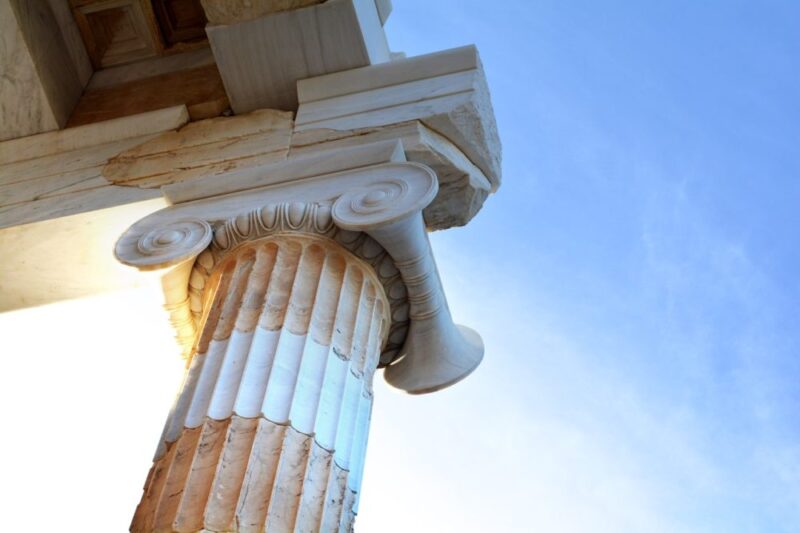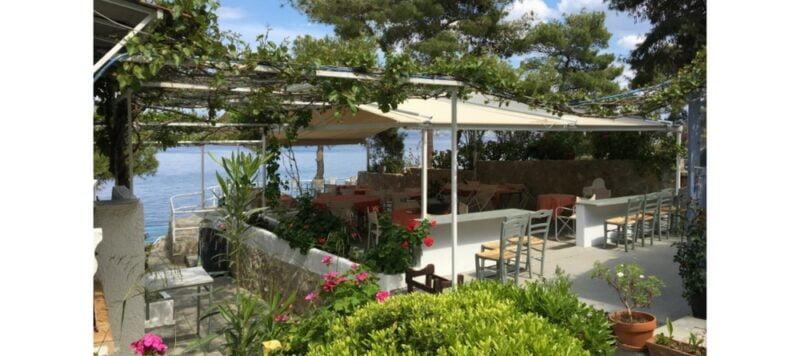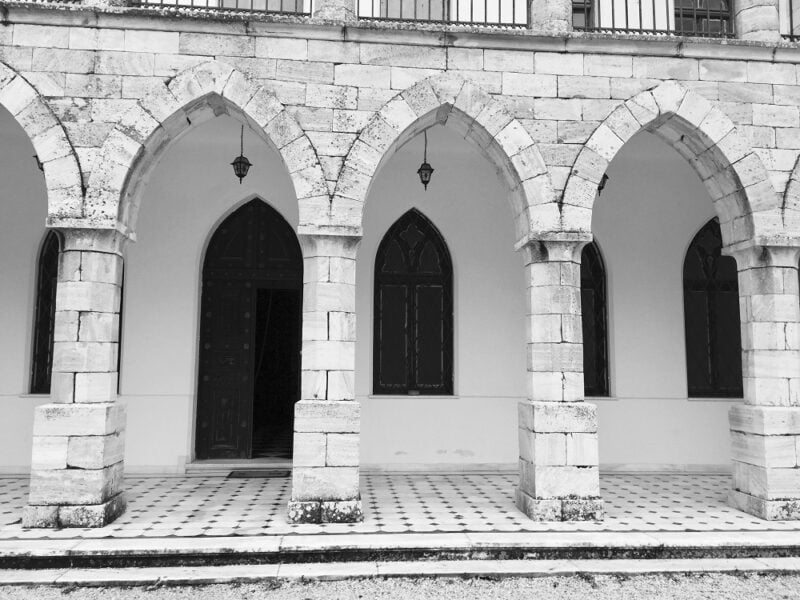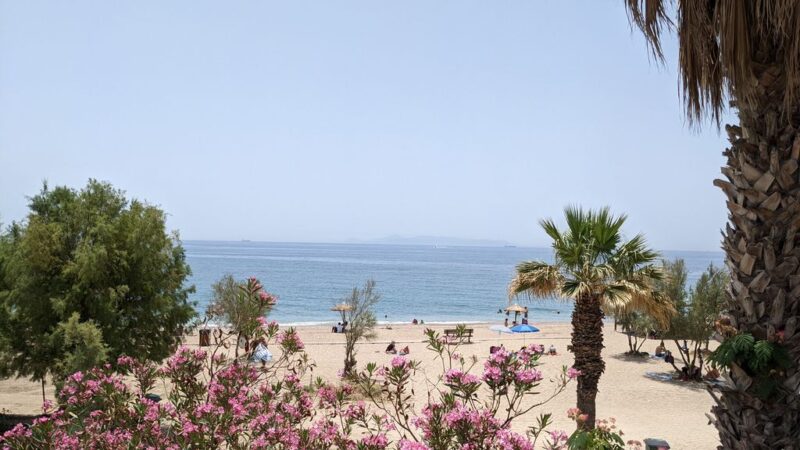If you’re interested in archaeology, a trip to Greece will fulfill your wildest dreams! But did you know that Athens alone is home to many must-see sites for understanding Greek antiquity? A few days in the capital will be enough to immerse you in the fascinating history of the cradle of democracy and philosophy. Follow us as we take you on a tour of the main archaeological sites to visit in Athens!
- 1 – The Acropolis of Athens: the most famous archaeological site
- Main archaeological sites around the Acropolis in Athens
- 3 – The ancient Agora
- 4 – The Roman Agora and Hadrian’s Library
- 5 – The Olympiaion: the temple of Olympian Zeus
- 6 – The Kerameikos district
- 7 – The Lykeion: Aristotle’s philosophical school
Here’s a list of the main archaeological sites in Athens. They are included in the combined Acropolis + 6 sites ticket, which allows you to visit them all at an attractive price!
1 – The Acropolis of Athens: the most famous archaeological site
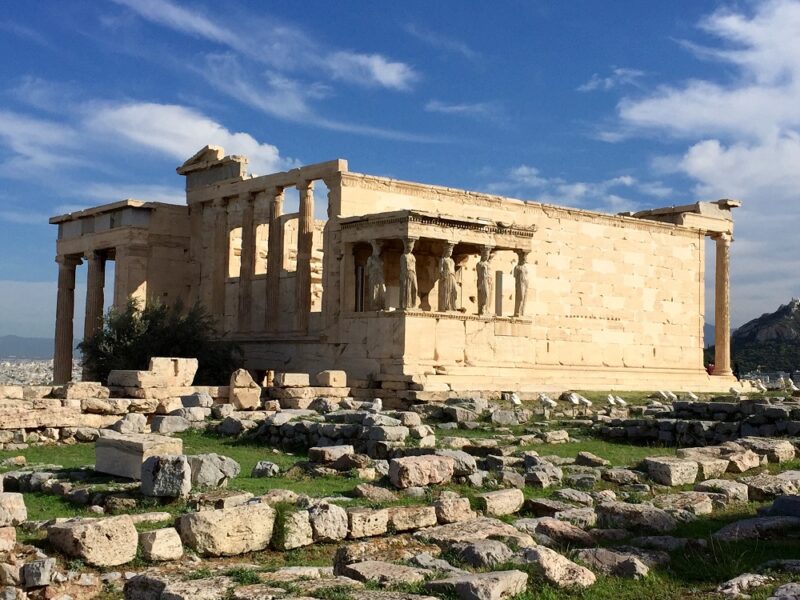
Wherever you are in the Greek capital, the majestic Acropolis is the focal point. This 156-metre-high rock is one of Athens‘ most famous and popular archaeological sites.
The Acropolis of Athens is packed with priceless treasures. Its concentration of monuments is unique for its historical importance and beauty. This architectural complex was designed over 2,500 years ago by the statesman Pericles and the illustrious sculptor Phidias. The site, largely dedicated to the goddess Athena, bears witness to the turbulent centuries it has seen. It is now a UNESCO World Heritage Site.
Here’s an overview of the must-see sights on this mythical rock. To find out more and plan your visit, read our detailed article on practical information about the Athens Acropolis. And here, all our articles on visiting the Acropolis and its Parthenon.
The Parthenon
The Parthenon is the most imposing building on the Acropolis in Athens. Dedicated to the goddess Athena, it embodies the devotion of the ancient Greeks and demonstrates their impressive mastery of architectural techniques.
A symbol of democracy, the Parthenon is at the origin of the influence of classical aesthetics throughout the world. The many paintings that decorated it are now on display at the British Museum in London and the Acropolis Museum in Athens, below the rock.
The Propylaea
Propylaea is the monumental entrance to the Acropolis in Athens. Dedicated to the gods who protected the 5 gates, its construction was interrupted in 432 BC by the outbreak of the Peloponnesian War. Its imposing columns provide a majestic introduction to the site.
The temple of Athena Nike
The temple of Athena Nike was built after the Greek victory over the Persians, in honor of the goddess of victory. Comprising 8 columns, it is representative of the purest Ionic style. Those friezes decorating the building depict key episodes in the war between the Greeks and Persians.
The Erechtheion
The Erechtheion is one of the most important sanctuaries on the Acropolis. It replaced an archaic temple dedicated to Athena Polias, destroyed by the Persians in 480 BC.
The last monument erected on the Acropolis, it housed some of the Athenians’ most precious relics. There were also the tombs of kings Cecrops and Erechtheus, as well as the mythical olive tree given by Athena to dominate the city after her victory over Poseidon.
Looking for a tailor-made guided tour of the Athens Acropolis? Find all our tips here!
Main archaeological sites around the Acropolis in Athens

The lower slopes of the Acropolis in Athens are also home to some very important remains. Don’t miss out on a visit to the capital!
The Odeion of Herod Atticus
The Odeion of Herod Atticus is an ancient theater built at the request of the famous Greek rhetorician. Originally, it was a covered theater with a capacity of 5,000. Today, the roof and some of the walls have disappeared, but it is otherwise remarkably well preserved. Its stage has been hosting open-air shows for several years now.
The theater of Dionysus
The Theater of Dionysus, built in the 5ᵉ century BC, is the oldest theater in Europe. It was here that Greek tragedy was born. The first performances of plays by Aeschylus, Sophocles and Euripides were held here as part of the great festivals in honor of the god Dionysus.
The Temple of Dionysus
At the foot of the Acropolis, the temple of Dionysus contained a gold and ivory statue of the divinity, sculpted by Alcamenes. Today, only the foundations of the temple and the base of the statue are still visible.
The Areopagus
To the north-west of the Acropolis, the Areopagus is a rock 115 m high. In ancient Greece, the Council of Elders stood at the summit. The Areopagus then housed the oligarchic Council of Eupatrides, before becoming the principal judicial institution of Athenian democracy.
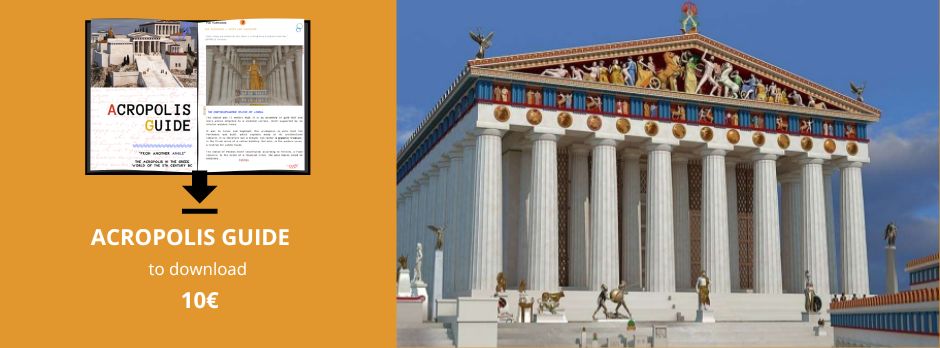
In Greek mythology, Ares was judged by the Greek gods for having killed a son of Poseidon who had outraged his daughter. Acquitted, he gave his name to the famous rock.
Good to know: An entrance ticket to the Acropolis gives access to the Parthenon, Propylaea, Temple of Athena Nike and Erechteion, all located on the rock. The Theatre of Dionysus, the Temple of Dionysus and the Herod Atticus Odeon are also located at the foot of the Acropolis. Access to the Areopagus is free of charge.
3 – The ancient Agora
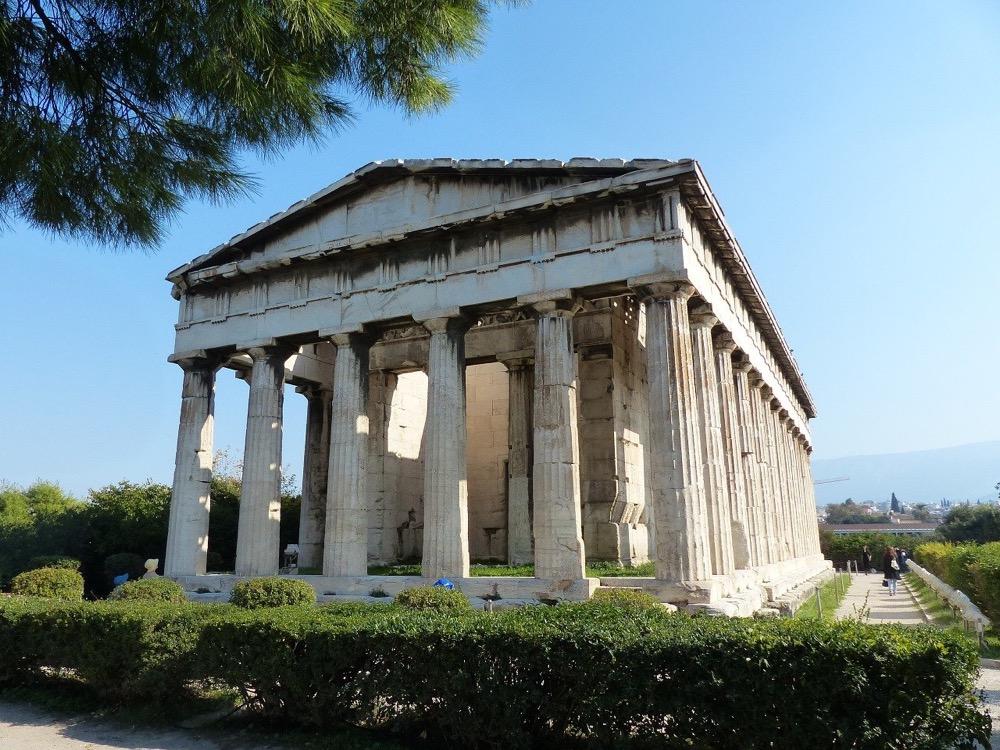
The ancient Agora is an ancient public square north of the Acropolis in Athens. Created in the 5ᵉ century BC, it housed the city’s main political, religious and legal buildings.
Gradually abandoned during the Roman-Byzantine period, the Athens Agora has been the subject of numerous archaeological excavations since the mid-19ᵉ century. Today, these excavations have identified some twenty remarkable buildings, including the Hephaestheion and the Stoa of Attalus.
The Hephaestheion: the temple of Hephaestus
In ancient times, part of Athens’ Agora was home to pottery and metalworking workshops. The temple of Hephaestus paid homage to the god of metallurgy and to Athena Erganè, goddess of pottery and crafts.
The Hephaestheion is one of the oldest buildings in the ancient Agora. Long used as a church, it remains virtually intact today. The building, entirely in marble, is surrounded by Doric columns. Its ornamental sculptures feature an interesting blend of Doric and Ionic styles.
Attale’s Stoa
Today, the Stoa of Attalus houses the Museum of the Ancient Agora in Athens. This Hellenistic portico was built in 150 BC by the king of Pergamon, Attalus II Philadelphus.
The reconstruction of Attalus’ Stoa on the ancient remains was based on an American archaeological study carried out in the 1950s. The huge building, now renovated, is typical of Hellenistic art of the period.
Don’t miss the site of the ancient Agora: in addition to its importance in ancient Athens, it’s also a very pleasant little corner of nature right in the center of Athens, with a beautiful view of the Acropolis.
4 – The Roman Agora and Hadrian’s Library

The Roman Agora was a market and meeting place built during Roman rule. Designed to relieve congestion in the ancient Agora, it is located in today’s Plaka district, near Monastiraki Square.
Construction of this agora spanned the 19ᵉ to 11ᵉ centuries BC, thanks in particular to donations from the emperors Julius Caesar and Augustus. Emperor Hadrian then had a monumental library built in his name. Much more than just a library, this rich complex of walled buildings contained exhibition, teaching and manuscript conservation areas. Partially destroyed in 267, it was never fully restored.
And if you don’t necessarily want to visit these 2 sites, they’re also clearly visible from the outside.
5 – The Olympiaion: the temple of Olympian Zeus

The Temple of Olympian Zeus, or Olympiaion, stands at the foot of the Acropolis in Athens. It’s a vast Corinthian-style building, first dedicated to the cult of Zeus, then to several other divinities.
Construction of the Temple of Olympian Zeus began in the 6ᵉ century BC and was completed in 131, during the reign of Hadrian. With its 104 17-meter-high columns, it was the largest temple in Athens.
Successive earthquakes have taken their toll on this imposing structure. Today, only 16 of the marble columns are still visible. Fifteen of them are standing, 16ᵉ have been lying down since a storm in 1852.
Head for Hadrian’s Gate for a fine view of the remains of the Temple of Zeus (through the gates).
6 – The Kerameikos district
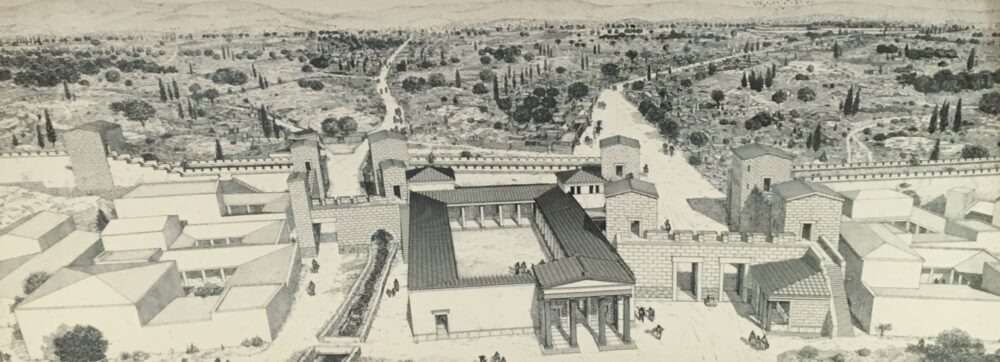
Kerameikos is a neighborhood in western Athens. It takes its name from Keramos, patron saint of potters and son of Dionysus and Ariadne. This is the origin of the word “ceramic”.
In ancient times, the Kerameikos district was home to potters attracted by its stream and clay soil. It was also home to a vast cemetery, the largest in the city until its destruction in 86 BC. Over time, the silt of the creek gradually buried the ruins of the old quarter.
In 1870, archaeological excavations began in the area. This excavation site and former cemetery are now open to visitors. The interesting little Kerameikos museum displays the archaeological finds made on site.
7 – The Lykeion: Aristotle’s philosophical school
This Lyceum of Aristotle or Lykeion was a gymnasium located within the walls of ancient Athens. Built in 335 BC, the edifice housed hippodromes, gymnasiums, long corridors and colonnades. It was originally used for sports and military training.
The Lykeion gradually became a spiritual center. Philosophers such as Socrates and Aristotle used the premises as a place to talk and teach. It was here that Aristotle founded his famous Peripatetic school.
Archaeological digs uncovered the remains of the Lykeion in the 1990s. In the future, the excavation area is to become an archaeological park.
If you don’t have much time in Athens, skip this archeological site, which is less interesting than the others.
We hope this overview of Athens’ main archaeological sites has piqued your curiosity! To find out more, read our article on the most beautiful archaeological sites around Athens.
Sandra B.
